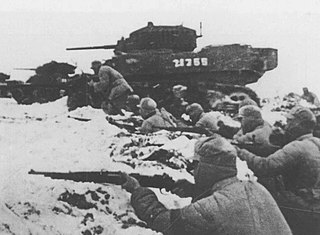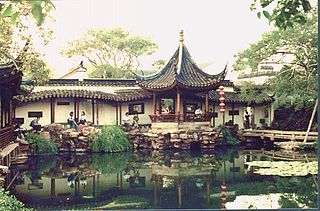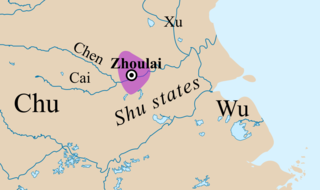 W
WThe 2017 China floods began in early June 2017. More than 14.9017 million people in 10 provinces and municipalities and regions were affected, especially the southern and central provinces and regions of Guangxi, Guangdong, Hunan, Hubei, Jiangxi, Jiangsu, Anhui, Zhejiang, Shandong, Shaanxi, Yunnan, Sichuan, Gansu and Henan. Hunan was the hardest hit. A total of 18,100 houses were destroyed, and more than 9,821-square-metre (105,710 sq ft) of crops were inundated.
 W
WSince early June 2020, heavy rains caused by the regional rainy season led to floods severely affecting large areas of southern China including the Yangtze basin and its tributaries. Rains and floods extended to central and eastern China during July and were described as the worst since at least 1998.
 W
WChao was a minor state of the Chinese Bronze Age, whose people belonged to the Shu tribes that lived south of the Huai River. Chao's exact location is unknown; traditionally, it was assumed that the state had existed in the vicinity of modern-day Chaohu, Anhui, but more recent sinologists like He Hao and Barry Blakeley consider it more likely that Chao was located further north, near the Huai River.
 W
WThe Battle of Loulin was fought in Winter 645 BC between the states of Chu and Xu, the latter being supported by a coalition of northern states led by Qi. Xu, originally the most powerful state of the Huai River valley, had been weakened by internal unrest and several wars since the beginning of the Spring and Autumn period. As its influence over eastern Hubei, southern Henan and central Anhui waned, Chu began to expand into these regions. Threatened by these developments, Xu joined an alliance of several northern states against Chu. In spring 645 BC, when Chu invaded Xu's southern heartland, the northern states sent a relief expedition in order to aid Xu and stop Chu's eastern conquests. The coalition forces eventually met Chu's army at Loulin and were defeated, marking the beginning of Xu's final decline and accelerating the end of Qi's hegemony over China.
 W
WOn June 3, 2006, a People's Liberation Army Air Force KJ-200 crashed in Guangde County, Anhui Province, China. All 40 people on board were killed.
 W
WThe Battle of Shuangduiji (双堆集战役) was a major campaign fought between the nationalists and the communists during the Chinese Civil War in the post-World War II era, resulting in a communist victory. The campaign was part of the Huaihai campaign.
 W
WSouth Zhili, formerly romanized as Nan Chih-li or simply discussed under various romanizations of Nanjing, was a province of Imperial China, under the Ming dynasty. It was established around the "reserve capital" Nanjing and included parts of the modern provinces of Jiangsu and Anhui, as well as the direct-administered municipality of Shanghai. Under the Qing dynasty, Nanjing lost its status as the "second capital" and Southern Zhili was reconstituted as the smaller province of Jiangnan, while North Zhili became Zhili Province.
 W
WThe State of Xu was an independent Huaiyi state of the Chinese Bronze Age that was ruled by the Ying family (嬴) and controlled much of the Huai River valley for at least two centuries. It was centered in northern Jiangsu and Anhui.
 W
WZhongli was an ancient Chinese state in the Huai River valley during the Spring and Autumn period. Its core area was located in the modern-day Fengyang County. At its peak, Zhongli was powerful enough to fight off various other states, and served as an important cultural, political, and economic centre. The state was conquered by its expansionist neighbor Chu during the 6th century BC, but its former capital city remained regionally important for several subsequent centuries.
 W
WZhoulai was a small state of the Spring and Autumn period that ruled a crucial part of the middle Huai River valley. Its capital, known by the same name, was located in modern-day Fengtai County in Huainan. Due to its strategic location, Zhoulai controlled the most important route from Hubei to the Yellow Sea. This made it a target of the expansionist state of Chu, which subjugated Zhoulai in the late 7th century BC in order to gain access to the east. While nominally allowed to maintain autonomy under its own dynasty, Zhoulai effectively became a puppet state under Chu military occupation and civil administration. It survived in this condition until 529 BC, when its capital city was conquered by Wu and its ruling family was formally deposed.